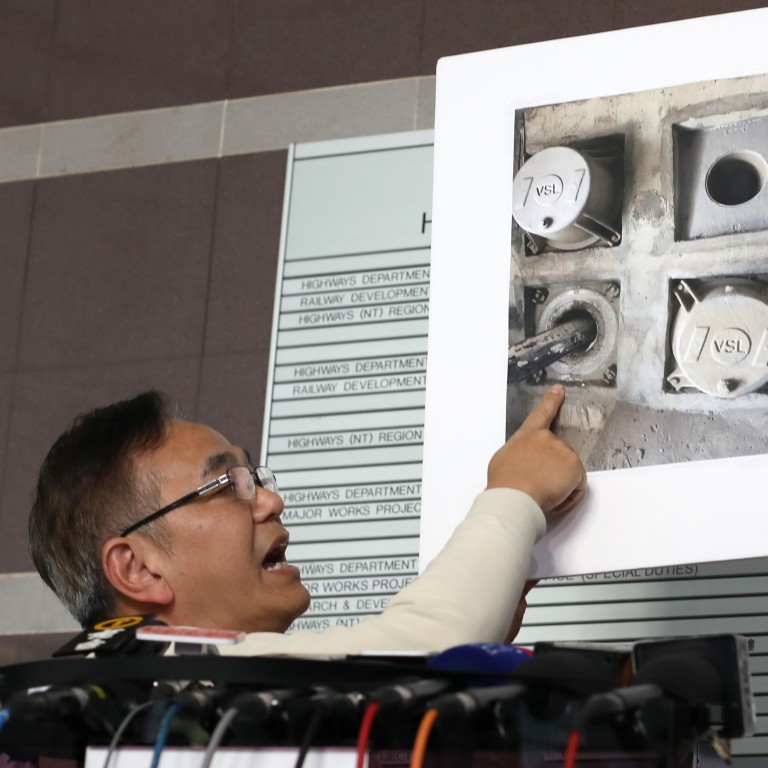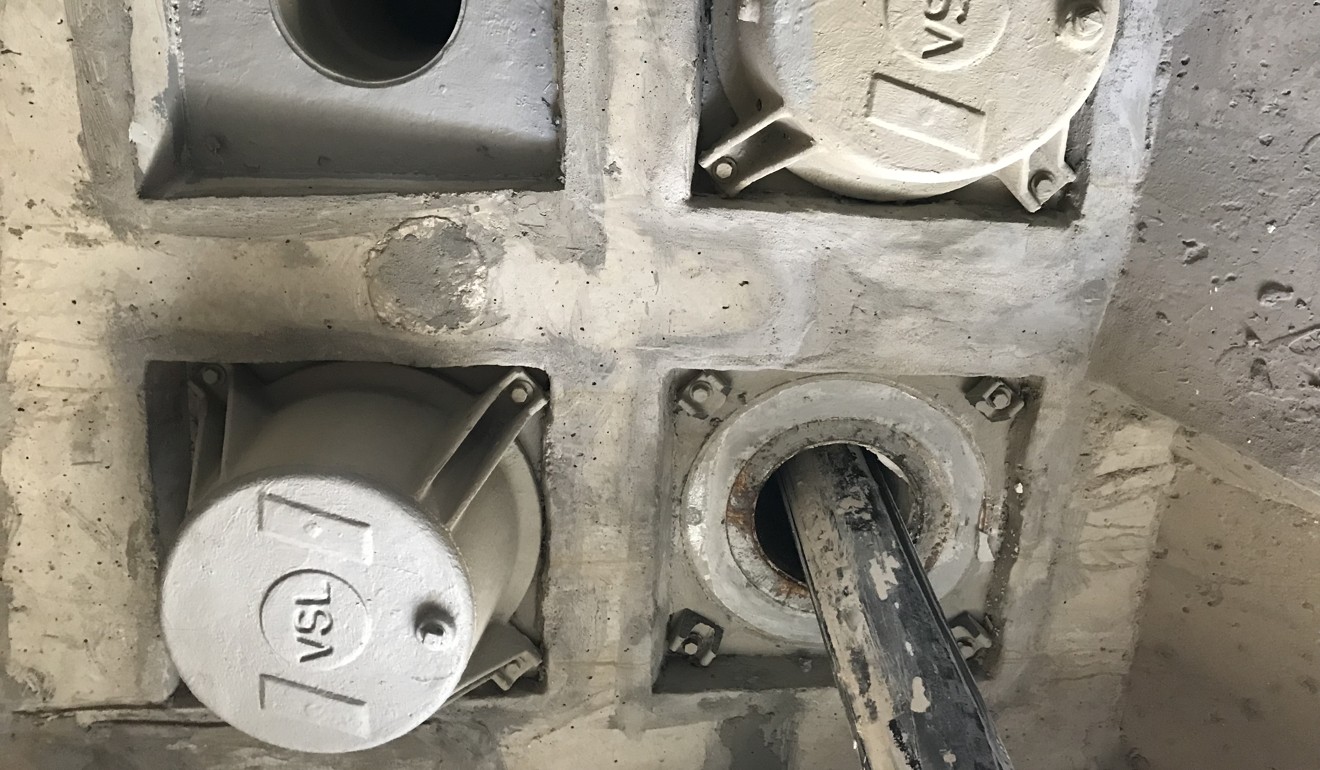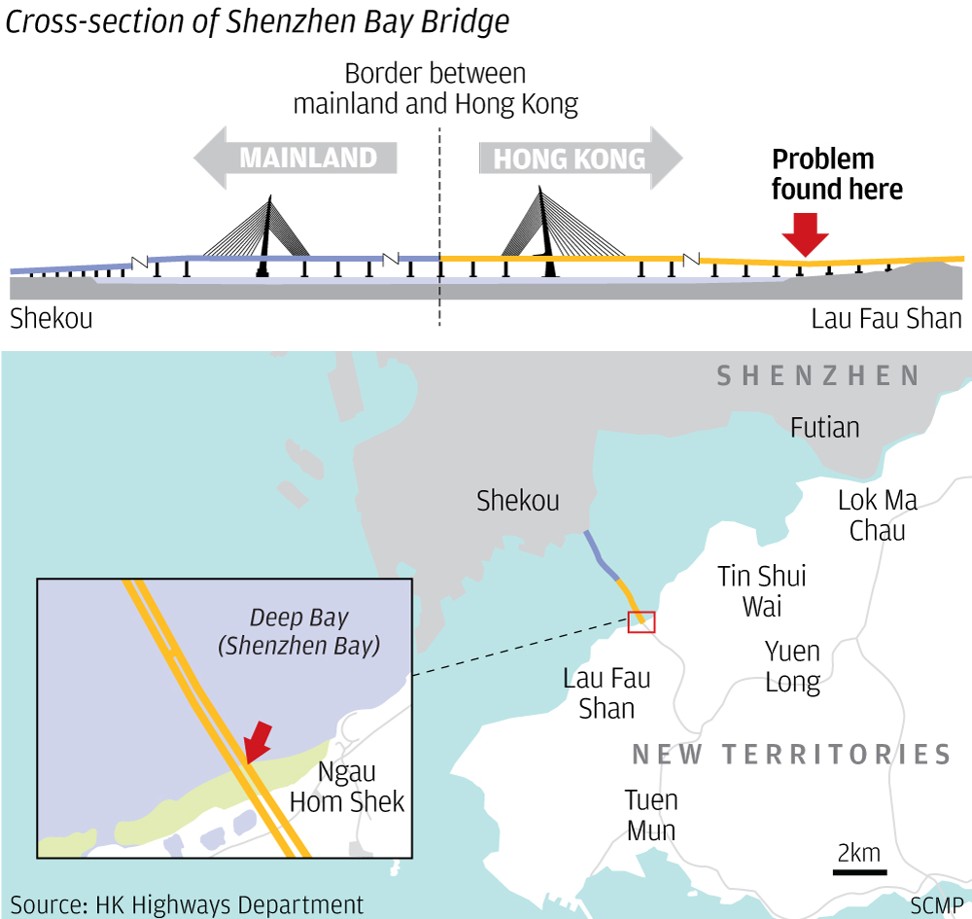
Snapped cable on cross-border Shenzhen Bay Bridge results in closure of two lanes but Hong Kong’s highways chief says there are no structural safety issues
- Highways chief Jimmy Chan called the incident ‘unusual’ and said the department would take three weeks to replace broken cable
- Preliminary findings showed the cable had broken due to metal components rusting
Part of the Hong Kong side of the Shenzhen Bay Bridge will be closed to traffic for at least three weeks as emergency repairs are being undertaken after a steel cable snapped, even as authorities stressed the cross-border connection remained safe.
As a safety precaution, the Highways Department would also check all bridges with a similar design across the city, Director of Highways Jimmy Chan Pai-ming said on Saturday evening.

Lawmakers and experts raised concerns about the standard of maintenance at the Shenzhen Bay Bridge, with a veteran engineer saying the incident set off alarm bells.
Chan, describing the broken cable as an “unusual” occurrence that was discovered during routine maintenance checks, sought to reassure motorists about the structural safety of the bridge.
Highways Department knew about late mega bridge documents as early as 2016
“When the bridge was designed, we took into account the need for cable replacement from time to time. According to our experts, even without one cable, it won’t affect the safety of vehicles on the bridge,” he said.
Chan said maintenance was done by Hong Kong contractors, but he did not name them.
Checks on other bridges of similar designs would be carried out over the next three months, he added.
When asked which bridges used that design, Chan said “there are quite a lot” and identified only two areas: the Tsing Yi South Bridge and Route 8, a road between Sha Tin and North Lantau. Route 8 includes the Lantau Link – a section made up of the Tsing Ma Bridge, Ma Wan Viaduct and Kap Shui Mun Bridge.
The 5.5km Shenzhen Bay Bridge, which took four years to build and opened on July 1, 2007, is the fourth of five – and the second busiest in 2017 – road-based boundary crossings linking Hong Kong and mainland China.
It is a dual three-lane highway spanning Deep Bay from Lau Fau Shan in Hong Kong’s New Territories to reclaimed land in the Shekou area of Shenzhen. In the first 11 months of last year, there were 4.02 million vehicular trips through the Shenzhen Bay port.

Chan said the snapped cable, with a diameter of around 160mm, was one of six “external prestressed tendons” at the affected area. Another 40 internal prestressed tendons also support the section.
He said following a preliminary study, it was believed the cable, comprised of many small steel bars, had broken due to components rusting. But it would take some time to find out why corrosion occurred after testing the material and strength.
Workers only spotted the problem at noon on Friday, Chan said. The last routine cable check in September and an inspection around two weeks ago found nothing amiss.
A grouting process had been carried out to protect the whole cable so it was difficult to spot potential corrosion problems from outside, he said.
Two lanes out of three on the Hong Kong-bound carriageway were closed to allow the cable to be replaced, which was expected to take around three weeks.
Veteran structural engineer Ngai Hok-yan said the incident set off alarm bells that other parts of the bridge were not properly maintained. He said if the structure was adequately maintained, rusting of components and cables snapping would not happen.

“This incident can be said to be unusual and rare,” Ngai said.
“If the real cause of the broken cable is rusting, it shows the structure has not been inspected for a long time or its routine inspection has not been sufficiently done,” Ngai said.
He warned of potential hazards in other parts of the bridge if maintenance procedures were flawed.
“The government needs to find out what went wrong with the maintenance and to thoroughly inspect other parts of the structure,” he said.
Jeremy Tam Man-ho, deputy chairman of the Legislative Council’s transport panel, said the incident was outrageous and he questioned whether anti-rusting measures and other maintenance works were properly conducted.
This incident will undermine public confidence over large infrastructure projects in Hong Kong
“This bridge is relatively new compared to the others before the handover era such as the Tsing Ma Bridge. This incident will undermine public confidence over large infrastructure projects in Hong Kong especially after the handover,” Tam said.
Stanley Chiang Chi-wai, spokesman for truck drivers’ group the Land Transportation Alliance, said the partial closure of the bridge would not affect them.
“The Shenzhen Bay Bridge is not a popular choice for cross-border trucks so we aren’t worried there will be congestion after the closure of the two lanes,” he said.
The main contractor of the Hong Kong section was Gammon-Skanska-MBEC Joint Venture. The government expected the project, costing HK$3.2 billion (US$410.3 million) back then, would bring a net economic benefit of HK$175 billion from 2000 to 2020. Then-president Hu Jintao officiated at the opening.



